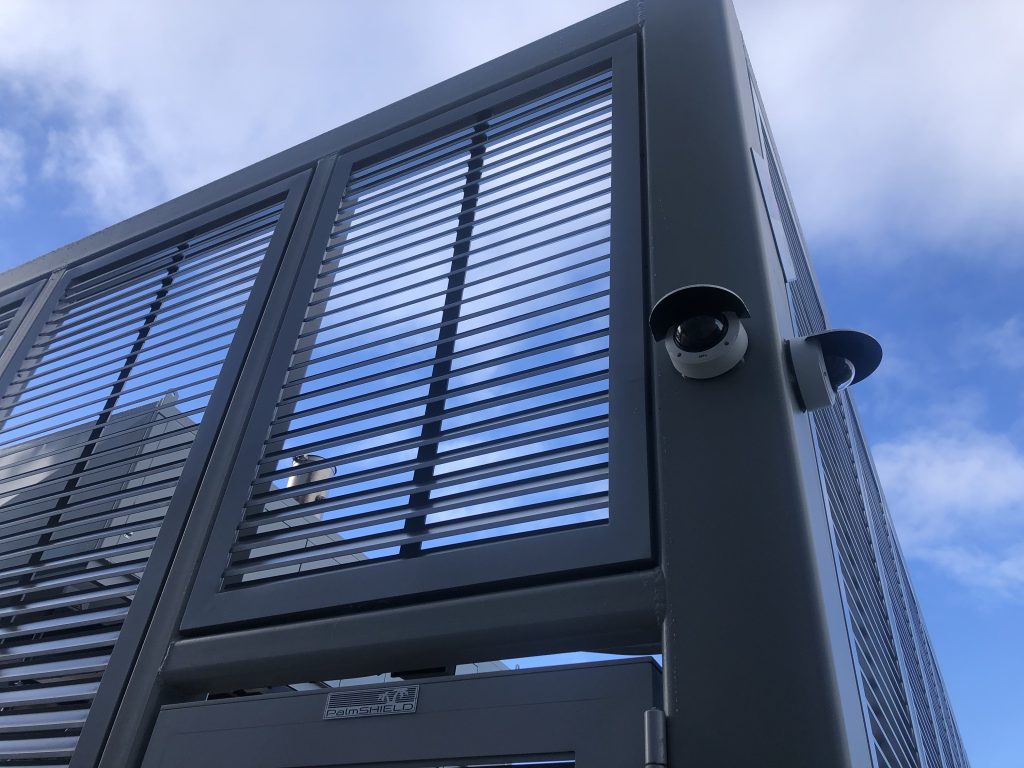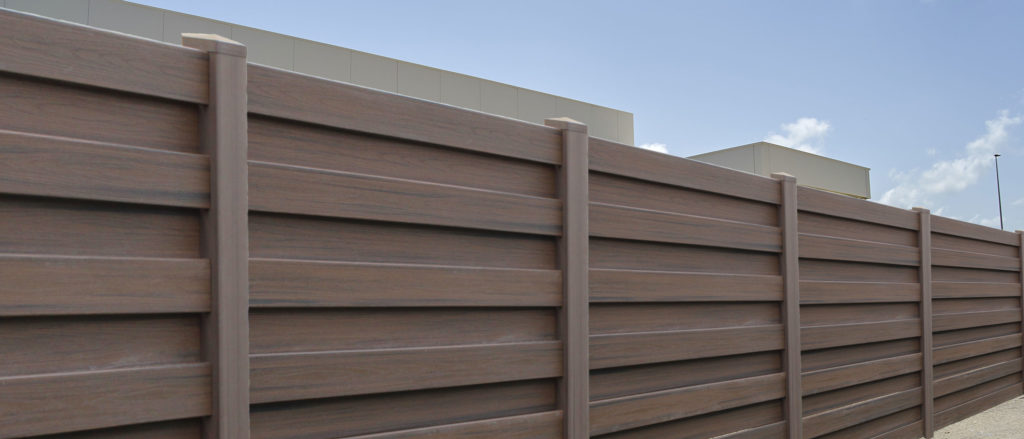The Ultimate Guide for Selecting Mechanical Equipment Screening

Mechanical equipment encompasses a wide range of devices that support heating, cooling, waste management, and water supply systems. Examples include HVAC systems, generators, breakers, compactors, containers, meters, and condensers. However, it is important to note that the classification of trash dumpsters may vary depending on local regulations, as many communities have specific guidelines regarding the placement and screening of such equipment.
Obtaining a building permit and, in many cases, community design approval is necessary for screening equipment. To ensure compliance with the approval process specifications, it is advisable to consult with your city planning department or local building inspector. Typically, a building permit application will require a set of design drawings prepared by an architect that meet specific mechanical screen fencing equipment requirements of the community.
Mechanical equipment screening is subject to stringent guidelines in the majority of communities. These guidelines cover various aspects, including overall design, considerations for public view, and the selection of materials that blend well with the surrounding structures. The guidelines typically employ a line-of-sight approach to determine the appropriate location, height, and coverage for the screening. It is important to note that while this guide and selection assistance provide valuable information, they should not override the specific requirements set by the community.
What are the key things to consider for architectural and mechanical screen fencing equipment? PalmSHIELD is widely recognized as the leading contractor for louvered screening in the nation’s market. See below for the ultimate guide on the topic.
PalmSHIELD’s sales team is ready to talk about your screening project. Contact us today!
Consider the Following for Roof and Building-Mounted Screening
Mechanical equipment screening installations generally fall into two categories: roof/building mounted, and ground mounted. Let’s start with a discussion of key things to consider for roof/building mounted.
- When selecting materials and colors for your screening, it is important to consider the scale and design of the building. If the building features vertical roof lines, the designer should opt for vertical louvers or slats in the screening to maintain a consistent visual pattern.
- The designer should carefully assess all potential views of the equipment and plan the screening accordingly. In cases where the building is located next to an elevated road, a fully-enclosed screen system with a roof might be necessary. However, in the case of buildings several stories tall featuring rooftop equipment not visible from any viewpoint, screening may not be required. It is essential to consult local building codes for specific guidelines.
- Due to ventilation, space constraints, or height considerations, it may not always be feasible to screen equipment. In such instances, you have the option of painting equipment to match the surrounding building surfaces. Additionally, taller stacks may be necessary for proper ventilation, and these can be constructed using similar building materials to blend with the overall design.
Please note that PalmSHIELD offers custom infill options. One notable example: our LED Backlit Laser Cut screens, which utilize internal lights, material sheets, and precision-cut infill designs to create visually stunning displays. These screens are ideal for both concealing equipment and attracting customers with their captivating appearance.
For Ground-Mounted Mechanical Equipment Screening:
- Standalone systems pose a unique challenge as blending the screening into the surroundings can be difficult. Designers should explore options such as incorporating greenscapes and hardscapes to complement the system and create a more harmonious appearance. Choosing screening colors in softer greens and browns can help it blend with the surrounding softscapes.
- Consider the public view of ground-mounted mechanical equipment. As it is typically visible from multiple sides, designers should ensure that the equipment is fully enclosed to accommodate any future property development.
- Safety and security are crucial for ground-mounted mechanical screen fencing equipment. The design should prioritize total security, preventing both accidental and intentional access by the public. Placing the mechanical screen fencing equipment tightly against the building and eliminating any openings for pedestrians is essential. Additionally, seek a padlock-free locking system to deter theft and secure valuable materials, such as copper. The screening should also be tall enough to obstruct any line of sight, minimizing the temptation for theft.
- Designers must consider not only proper ventilation but also public safety from steam, exhaust, and heat when determining the size of the screening.
- Landscape architects and designers often implement softscapes around mechanical equipment. These softscapes can serve as the screening itself or help soften existing screening. It is important to account for year-round plantings and climate changes. In situations where plantings shed leaves during fall, the view of mechanical equipment or screening may become unsightly. Additionally, ongoing growth and maintenance of the plantings need to be considered. As some equipment produces heat, steam, or exhaust, designers should select resilient plants that can withstand slight changes in conditions. It is also important to be mindful of the potential harshness of reflective sunlight from the equipment and screening on certain plantings.
Call the number below to speak with one of our salespeople, or click the button on the right for a free quote!
Design and Material Selection for Equipment Screening:
- Structural considerations are essential when designing mechanical screen fencing equipment. Engineers and architects should calculate the wind loading based on site conditions and select screening that meets the latest UBC and IBC codes. It is recommended to request engineering services or have the system specifically engineered for the site, including stamped drawings, calculations, and performance data.
- Visibility can be tailored in louvered mechanical screening. Most louvered screening options offer either 100% or 80% visibility. Choosing 80% openness allows for approximately a ½” visible opening between the 4″ tall louvers when viewed straight-on.
- Openness is directly related to the visual screening percentage, determined by the actual opening between the louvers over a given area. The smallest opening between two louvers has the most significant impact on openness. For example, a 4″ tall louver with ½” overlap will result in a 2 ¼” opening. With 4″ tall louvers spaced 3 ½” apart, this translates to approximately 64% free area, which affects the volume of air exchange. Designers should verify their equipment requirements for the desired percentage of free area.
- Design considerations encompass the overall design of the screening, including the infill material installed within the frame and between the posts. It is important to consult local codes for specific design requirements, with many codes mandating that the infill material closely matches the adjacent building materials. Commonly selected designs include:
- Vertical, horizontal, and diagonal louvers, widely used in mechanical screen fencing equipment, adjust the spacing between the louvers to control visibility and openness.
- Perforated metal screening is available in various patterns, hole sizes, and staggering of holes. Different perforation options, such as circles, squares, hexagons, and stars, influence visibility and openness. Use offset sheets to help maintain openness while eliminating visibility, and different colors of sheets can also be employed.
- Expanded metal offers real security while maintaining visibility and openness, expanded metal comes in flat and raised sheets with varying width and height of openings.
- Tubular or solid slats are popular choices for mechanical screen fencing equipment. They can be installed diagonally, vertically, or horizontally, and their width, thickness, and spacing can be adjusted for desired openness and visibility. Slats can also be arranged in a shadow box pattern to minimize visibility while maintaining openness.
- Solid sheet and wire mesh are additional choices for mechanical screen fencing equipment.

After determining the type, height, location, and material selection for mechanical screen fencing equipment, designers need to finalize the configuration of their design. The configuration encompasses more than just line of sight considerations; it involves several other important factors:
- Clearance: It is crucial to maintain the required unobstructed area around mechanical equipment as specified by the manufacturer. Consult the equipment manufacturer’s maintenance and installation documents for specific guidelines. Additionally, designers should check local codes and adhere to the greater of the two clearance requirements.
- Access: Refer to local codes for any access requirements related to mechanical equipment enclosures. Typically, a code-specified door or access portal goes on the control side of the equipment. Keep in mind that doors usually open outward, so plan the design accordingly.
- Individual vs. continuous screens: In certain applications, local codes may specify either a single continuous screen or multiple individual screens. It is important to review the local requirements and comply accordingly.
- Openings: Engineers and architects need to identify any electrical wiring, vents, piping, and ducts that require access to the equipment. The design of the screening should accommodate these openings by communicating their location and size accurately to the screen fabricators. Accommodate these elements with framed openings.
- Parapet walls: If there are existing parapet walls along the building’s perimeter, designers may consider utilizing them to raise the height and reduce the amount of screening required. However, it is essential to check local equipment enclosure codes and identify all lines of sight concerning the parapet walls.
Once you have completed all the necessary steps outlined in our user-friendly guide for selecting mechanical screen fencing equipment, it is time to reach out to your chosen equipment screening manufacturer. Provide them with all the information you have gathered, including the type, height, location, materials, configuration, and any other relevant details. Allow the manufacturer to assist you in finalizing the design, layout, and material selection.
Expect your designers to provide you with a comprehensive set of fabrication drawings, elevation views, engineering specifications, and product details specific to your project. These drawings will be valuable for obtaining permits and securing approval from community planning authorities.
We hope that our how-to guide and checklist have been helpful in your process of selecting mechanical screen fencing equipment. As a proud and reputable equipment screening manufacturer, PalmSHIELD is here to provide further support.
Still have questions about mechanical screen fencing equipment? Our knowledgeable sales staff is ready to answer all your questions!
